


A SEAmagine 3-person Aurora submersible depth rated to 1000m, whilst diving in French Polynesia, made a scientific discovery with the first ever recorded sighting of a “Prickly” Shark in that part of the world





A SEAmagine 3-person Aurora submersible depth rated to 1000m, whilst diving in French Polynesia, made a scientific discovery with the first ever recorded sighting of a “Prickly” Shark in that part of the world

SEAmagine, based in California, designs, engineers and manufactures a range of small private submarines with the capability to take humans safely and confidently into the depths of every corner of the world’s oceans. After almost three decades in business, SEAmagine continues to set the standard for the industry. Co-Founder Charles Kohnen spoke to Richard Hagan about the business of carrying people into earth’s most spectacular, wondrous and hostile environment.
SEAmagine was founded in California in 1995 by brothers Charles and William Kohnen, who were soon thereafter joined by Ian Sheard. The trio, all engineers, were drawn from the offshore oil industry and NASA’s Aerospace industrial sector.
In 1995, there was no company in the world focused on building submersibles. At that time, recalled Mr Kohnen, the oil and gas and defence sectors had replaced submarines with remotely operated vehicles, and later autonomous underwater vehicles: “SEAmagine was instrumental in the revival of the manned submersible sector. It was a true trailblazer, as we were the only company in the world solely focused on redefining the basic concepts of small, manned submarines and their capabilities. Notably, for example, our
company was the first to champion the acrylic spherical cabin which has since become an industry standard.”
SEAmagine’s continued drive for innovation and evolution within the submersible space has resulted in a string of impressive industry firsts and category records.
A particular highlight is the company’s boarding design philosophy. Until SEAmagine was established, manned private submarines were boarded first and then launched at sea. “We revolutionised this practice by being the first company to introduce the capability for the sub to be boarded after it was launched in the water,” said Mr Kohnen. “This convenient design and operational feature had never previously been
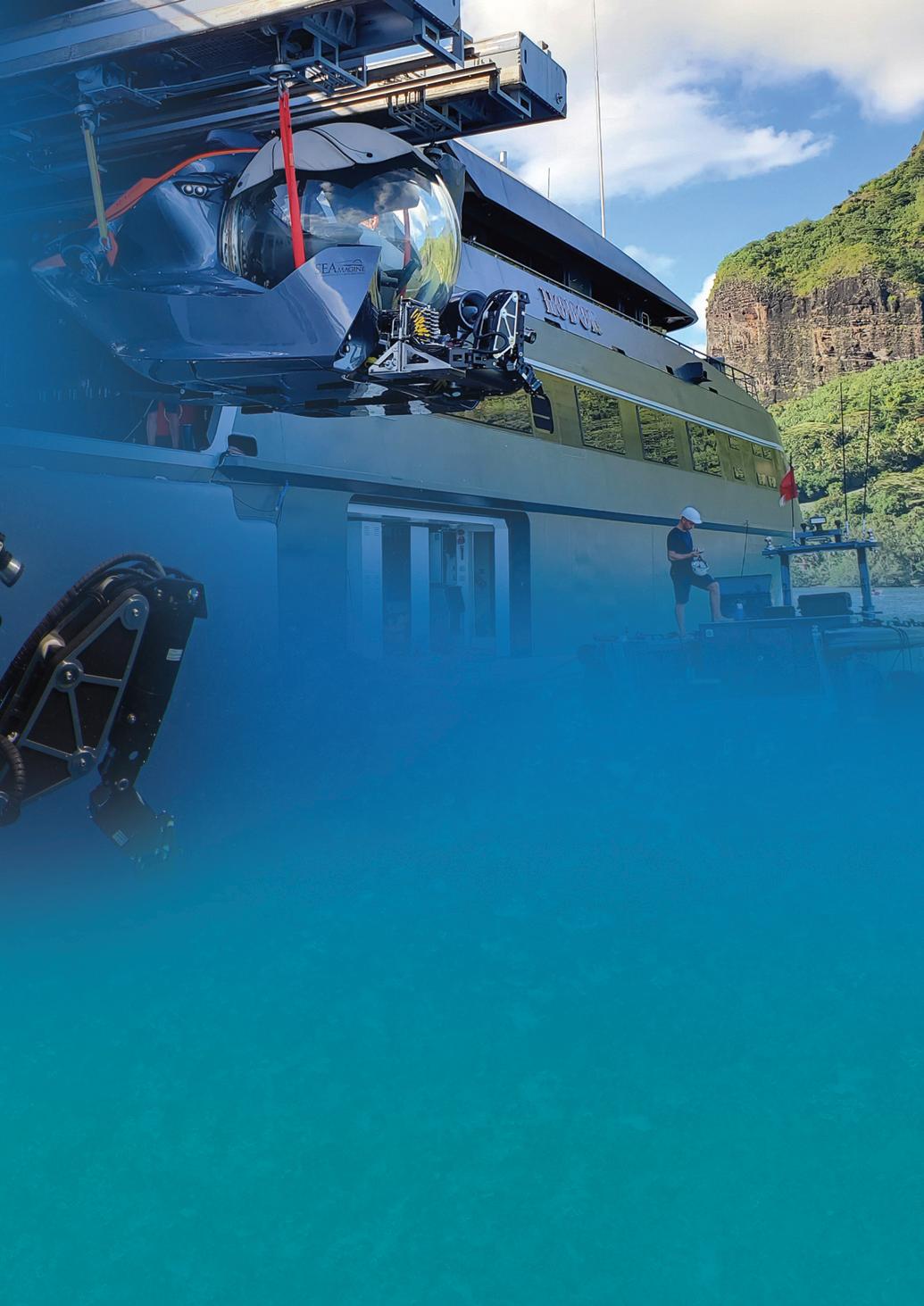
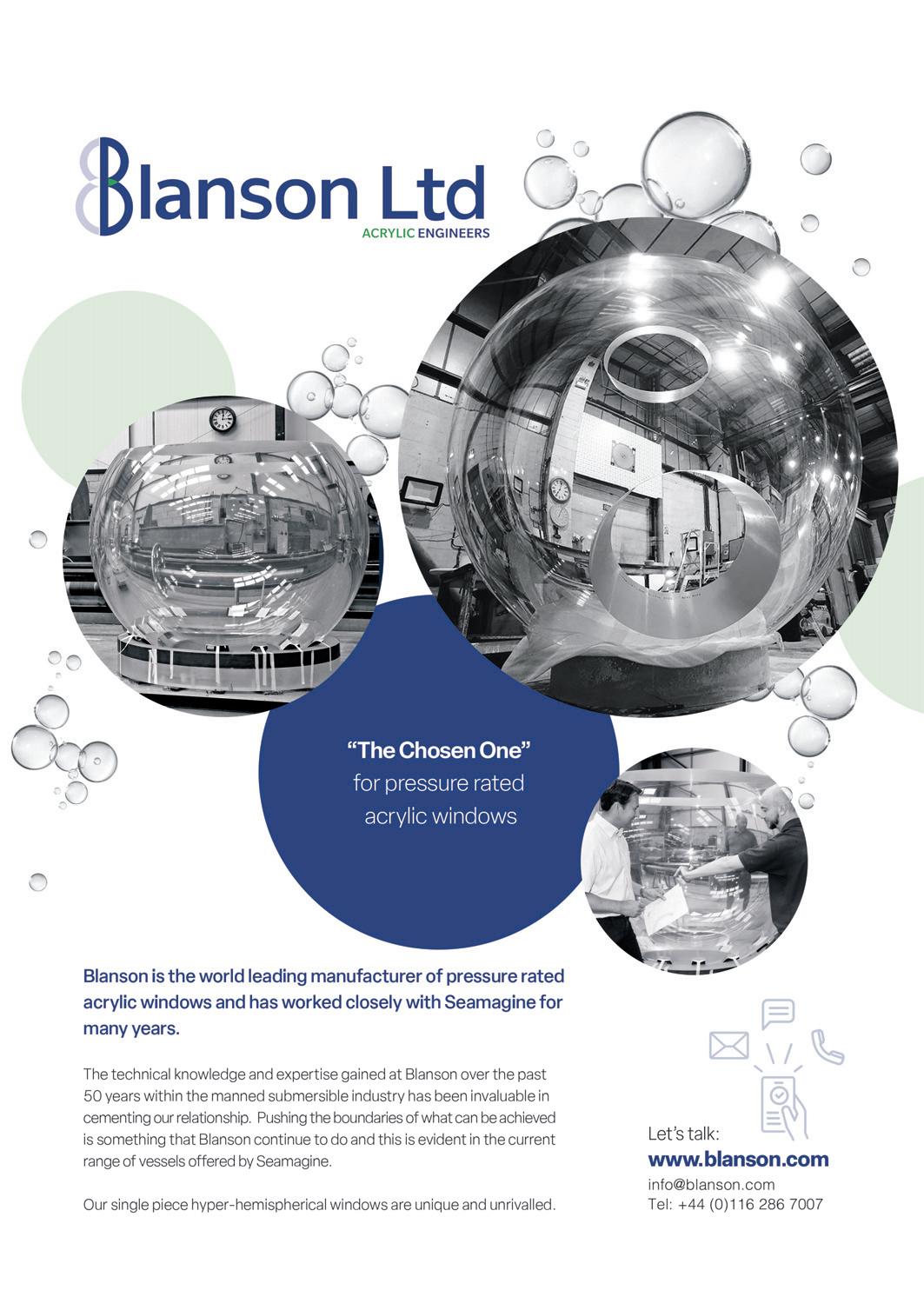
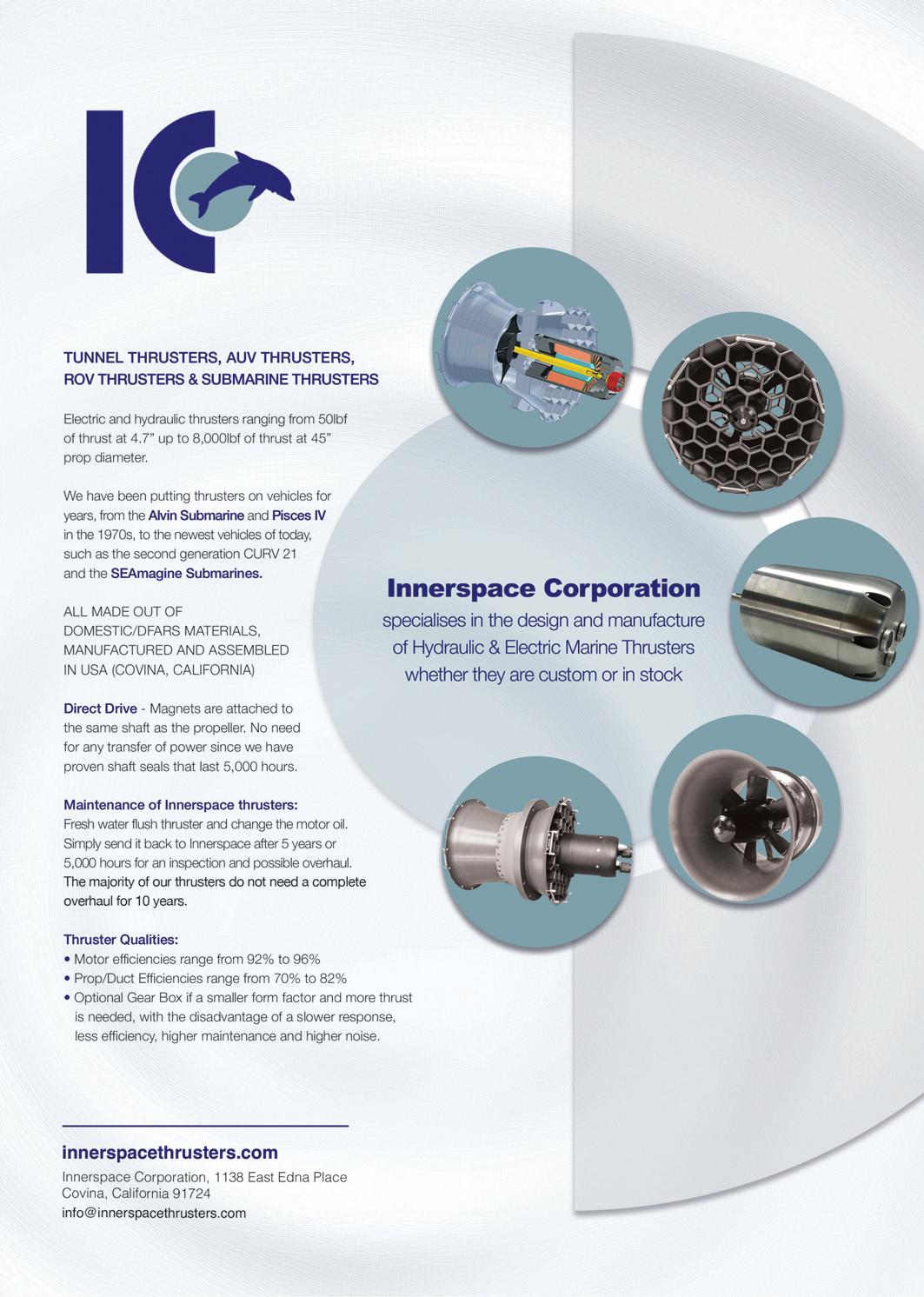
thought of. Today, it’s a focal point of SEAmagine’s history and one that has been adopted as an industry standard.”
SEAmagine has also poured considerable effort into the actual act of boarding, too.
“We’ve developed a highly improved, patented boarding arrangement for passengers which is important for the tourism and leisure markets,” Mr Kohnen explained.
“You need to do a lot of gymnastics to enter other subs, and it’s not always suitable for everyone.”
F or SEAmagine safety is paramount, and it defined industry standards. In the 1990s SEAmagine worked with the US Coastguard to establish the first
submersible pilot training program and certifies all submersibles with the American Bureau of Shipping.
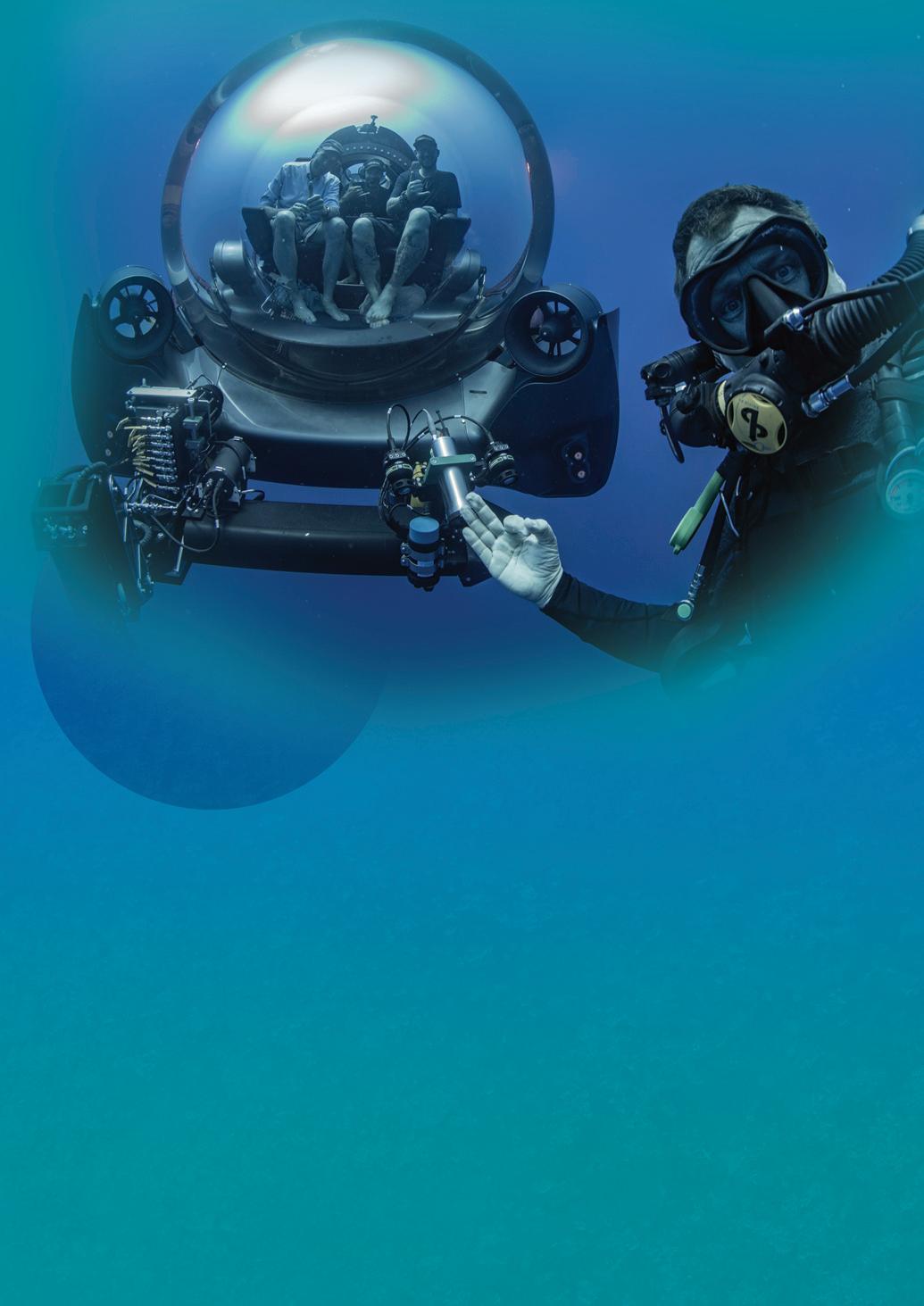
Another highlight in SEAmagine’s journey was its pioneering introduction of a threeperson acrylic submarine - the first com pany to do so. Its first three-person submarine was delivered in 2004, and by 2022 was still in full operation, having logged over 3,100 dives with an unblemished reliability record. “It’s one of the busiest subs in the world,” said Mr Kohnen.
Meanwhile, SEAmagine’s combined fleet of delivered submarines has, to date, accumulated over 12,000 dives. According to Mr Kohnen, this is four times more than
the total dives accumulated by all of SEAmagine’s competitors’ subs combined.
“The extensive usage of SEAmagine subs in the leisure, commercial and defence sectors is an undeniable testament to the design and reliability of our product,” he said.
With its headquarters near Los Angeles, California, SEAmagine employs an experienced team of engineers and technicians who are supported by an impressive array of nearby subcontractors.

The company is an industry-leading designer and manufacturer of two- to seven-person submersibles for use on yachts - in scientific and professional expeditions - and for the defence sector. All of its subs are built to navigate depths ranging from 100 metres to 2,300 metres and are formally classed by the American Bureau of Shipping (ABS).
T he high operational rate of its fleet has directly benefited SEAmagine’s recently launched, latest generation
of submersibles. The Aurora product line is the company’s fifth-generation series of submersibles. Drawing from its decades of operational experience, the Aurora series of models boasts a submersible solution for every requirement.
A close relationship with key suppliers is an important aspect of SEAmagine’s business. For example, the company uses the world’s most efficient underwater propulsion thrusters produced by Innerspace Corporation. These direct drive thrusters, being of superior hydrodynamic design, have an unsurpassed record on low noise, high reliability, and on requiring extremely low levels of maintenance.
The Aurora-3C model is SEAmagine’s most compact three-person model and is rated to a depth of 460 metres. Its compact dimensions and relatively low four-tonne weight make it convenient for installation on a ship. The Aurora-3C is marketed to performance-seeking customers, including
Coast Guard agencies and yacht owners seeking a submersible with Top Gun-like performance underwater.
The larger Aurora models have occupancy capacities ranging from three to seven people, and depth ratings from 100 metres to 2,300 metres. The larger occupancy models are rated for shallower operations and are aimed at the leisure and tourism markets, while the deep-rated Auroras are aimed at the scientific, professional and defence sectors.
SEAmagine’s submarines all offer a transparent cabin with minimal nearby visual obstructions such as pontoons and hatches. SEAmagine’s design is unique in that the unobstructed view is ensured for all occupants of the submersible and not just those seated in front.
In January 2021, a SEAmagine submarine made history when it delivered the firstever observation of a mature prickly shark (Echinorhinus cookei) off the island of
Moorea in French Polynesia at a depth of 500 metres. The sighting was so scientifically significant that it was published later in 2021 within Cybium, an International Journal of Ichthyology.
Meanwhile, that same year, SEAmagine delivered two submersibles for the US Navy's Naval Sea Systems Command (‘NAVSEA’) that are now operated by the Azerbaijan Coast Guard in the Caspian Sea for counter-terrorism inspections. SEAmagine trained multiple teams of Azerbaijani Coast Guard officers to pilot and support the submarines.
While SEAmagine has enjoyed significant success in the leisure and defence markets, it’s pushing to expand the use of submersibles in the commercial market, and particularly the offshore oil and gas industry.
“We believe that a small support vessel can hold a SEAmagine submarine and perform the same work that a large

work-class remotely operated vehicle can,” said Mr Kohnen, “but without needing the expensive, large support ship with dynamic positioning that the ROV needs.
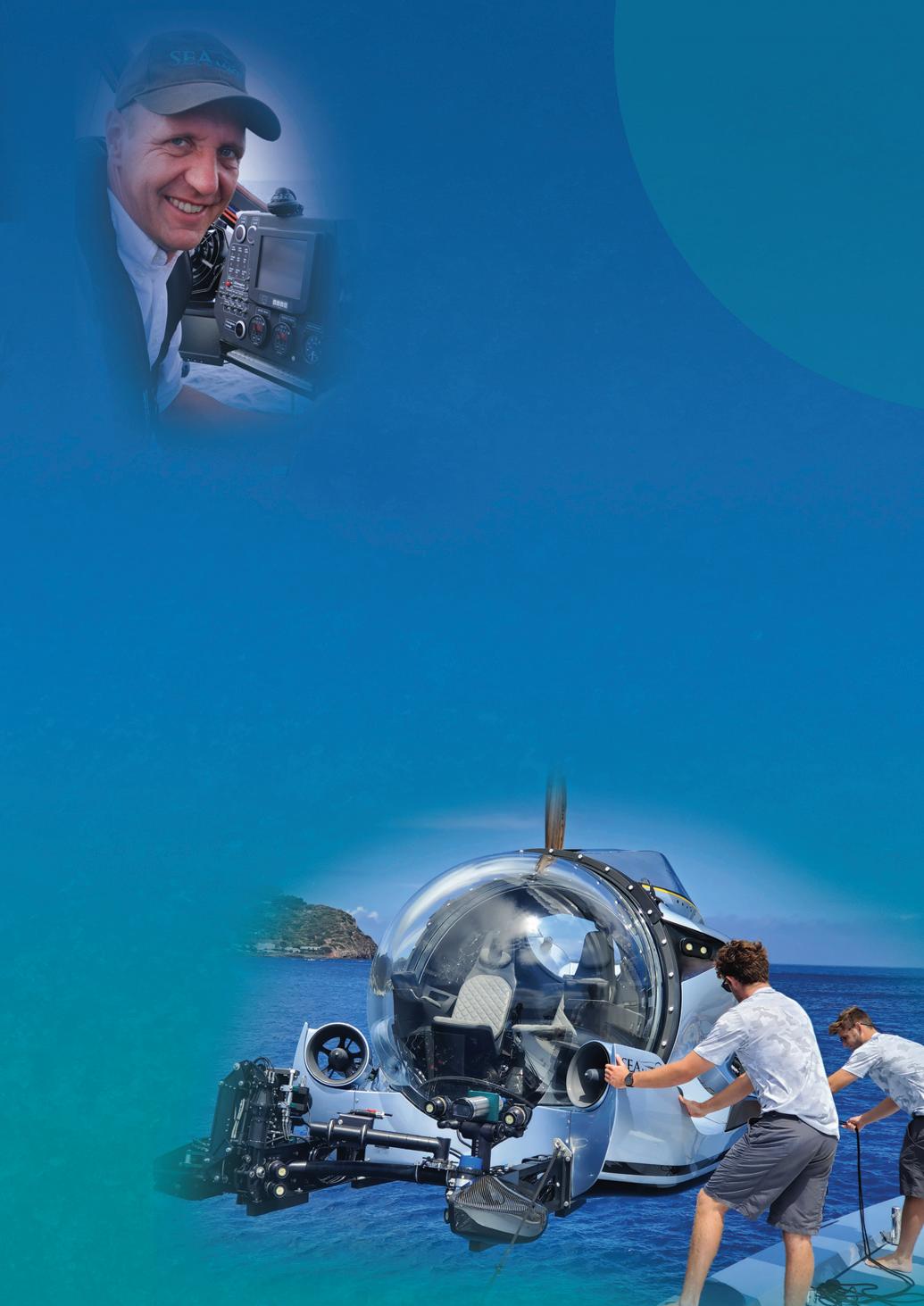
“Once launched, our sub is independent of the surface support ship and unlike the ROV, it has no umbilical to the surface. It is able to perform difficult subsea tasks that are typically assigned to large workclass ROVs and can present new options for nearshore projects in the energy sector, because the daily operational cost is lower.
“There are critical benefits in costs, efficiency and quality of data with
a crewed vehicle that’s still not possible with drones, depending on the parameters and context of a given subsea project.”
In conclusion, Mr Kohnen emphasised the unique value and insight that a manned submersible delivers underwater: “I have made close to 1,000 dives on our subs around the world, and each time it’s still a thrill to go underwater. What we discover by being underwater in a submarine with the incredible field of view and so much technology at our fingertips, provides insight, knowledge and situational understanding of our ocean that other means cannot replace.” n
